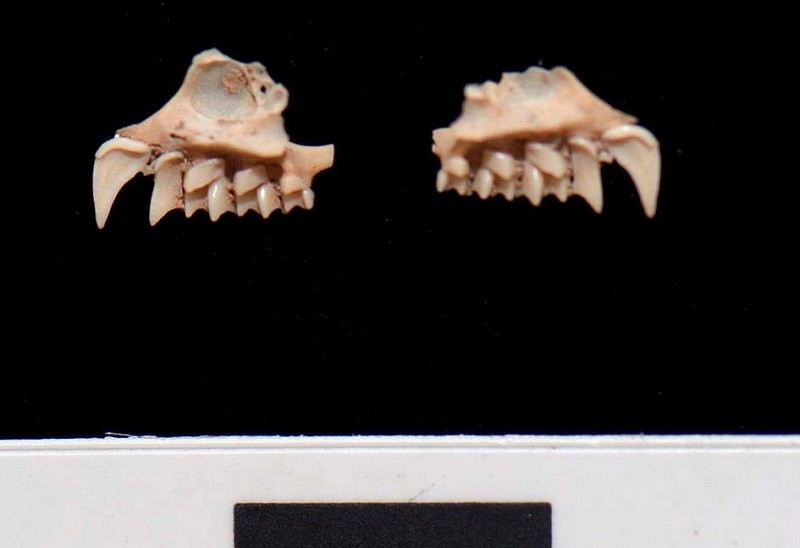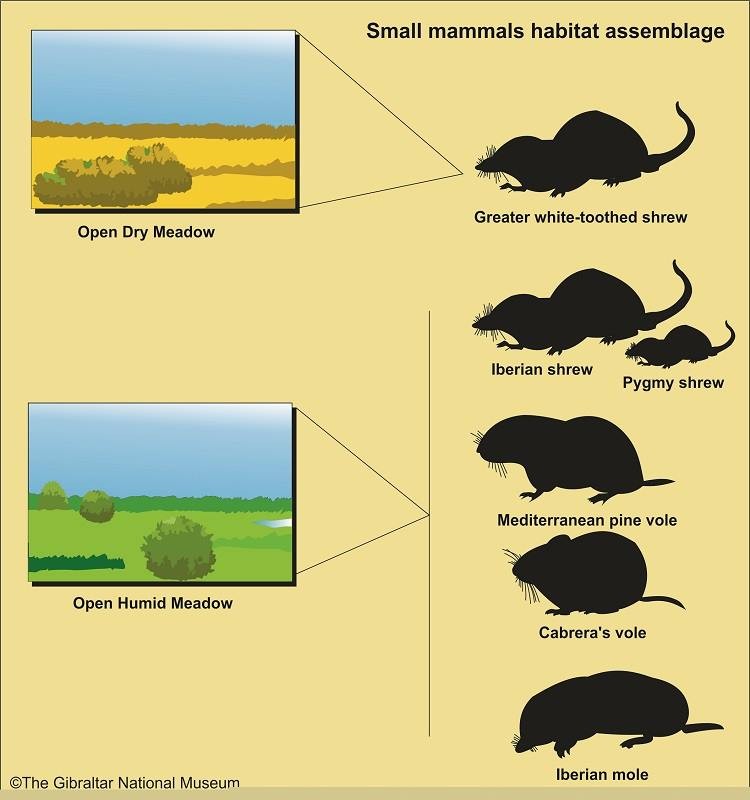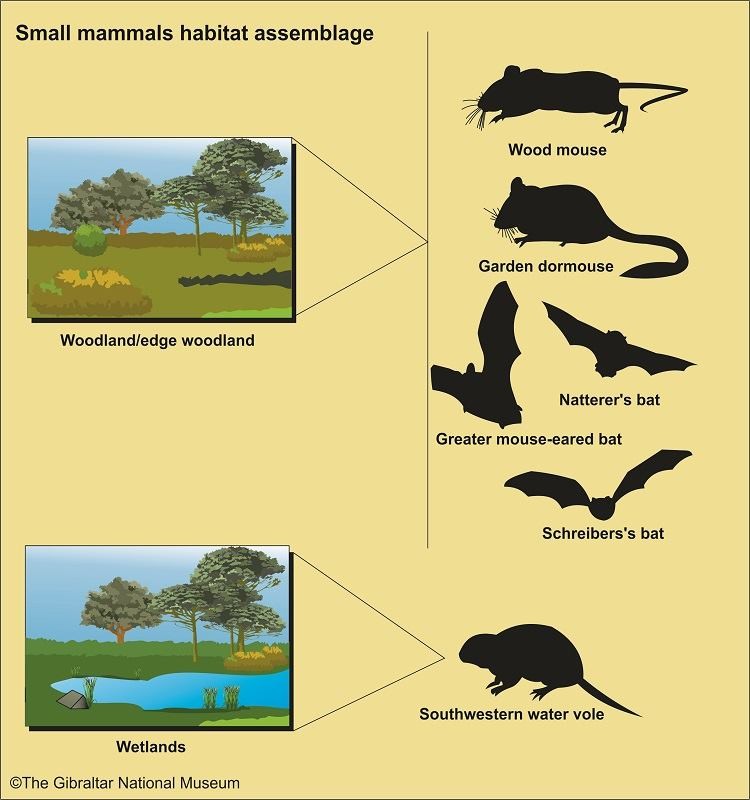micromammals of gorham’s cave

Maxilla of a Schreibers' bat (Miniopterus schreibersii)
from Gorham's Cave
Micromammals of Gorham’s Cave
The reconstruction of the landscape and environment at the time Neanderthals lived in Gibraltar’s caves, is one of the main lines of research led by the Gibraltar National Museum. It takes a multidisciplinary approach to reconstruct this puzzle: geology, palaeobotany, zooarchaeology, ornithology or the study of micromammals as well as amphibians and reptiles.
Today we will focus on the studies which have been carried out on a group of small animals from Gorham’s Cave: the micromammals. The analysis of these species, provides important data for the reconstruction of the environs, given these are highly specialised animals which require a particular environment or conditions (humidity, temperature…).
The study of the micromammal remains has identified 12 species:
Order Eulipotyphla (formerly Insectivora): greater white-toothed shrew (Crocidura russula), Iberian shrew (Sorex gr. coronatus-araneus), pygmy shrew (Sorex minutus) and Iberian mole (Talpa occidentalis).
Order Chiroptera (bats): greater mouse-eared bat (Myotis myotis), Natterer’s bat (Myotis nattereri) and Schreibers’ bat (Miniopterus schreibersii)
Order Rodentia (rodents): Cabrera’s vole (Microtus (Iberomys) cabrerae), Mediterranean pine vole (Microtus (Terricola) duodecimcostatus), south-western water vole (Arvicola sapidus), wood mouse (Apodemus sylvaticus) and garden dormouse (Eliomys quercinus)
With the exception of the bats, it is likely that these animals would have been transported to the cave by a nocturnal bird of prey such as the Eagle Owl.
The occurrence of this assemblage of species indicates the presence of different habitats outside the cave: open dry meadow, open humid meadow, woodland/edge woodland and wetlands.
The study of the environmental conditions required for the existence of these micromammals, suggests that when the cave was occupied by Neanderthals and later modern humans, annual temperatures were lower (-3.7˚C) than today, with mild summers (-0.2˚C) and harsher winters (-8.7˚C) yet maintaining a Mediterranean climate suitable for continued human presence.
Micromammals from Gorham's Cave with their corresponding habitats


Published: April 08, 2020
Other similar VM - Archaeology
18-20 Bomb House Lane
PO Box 939,
Gibraltar
